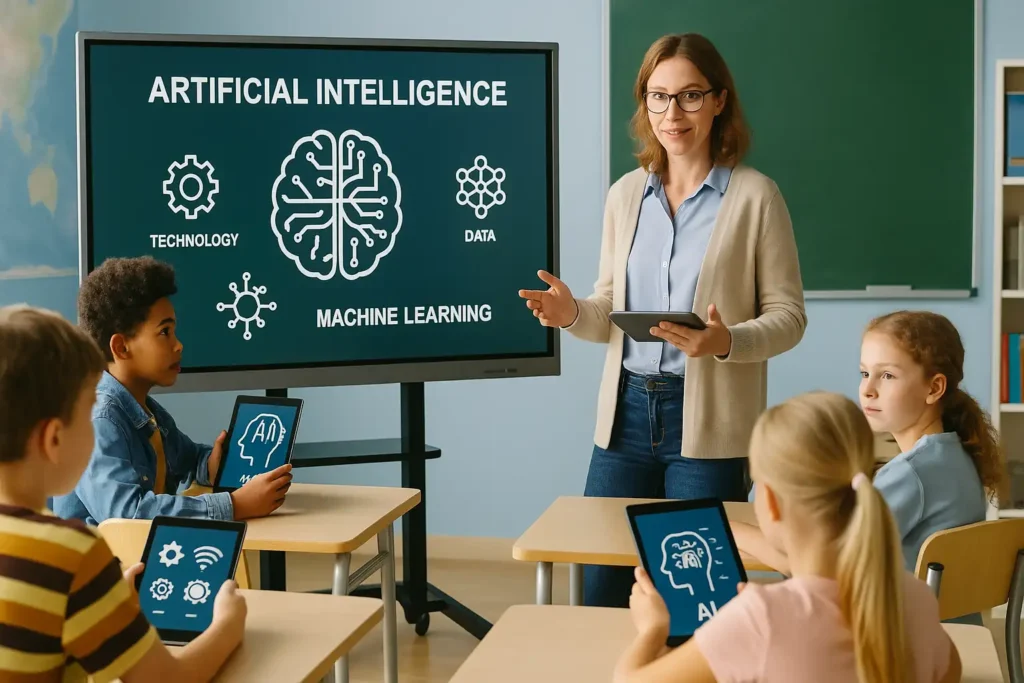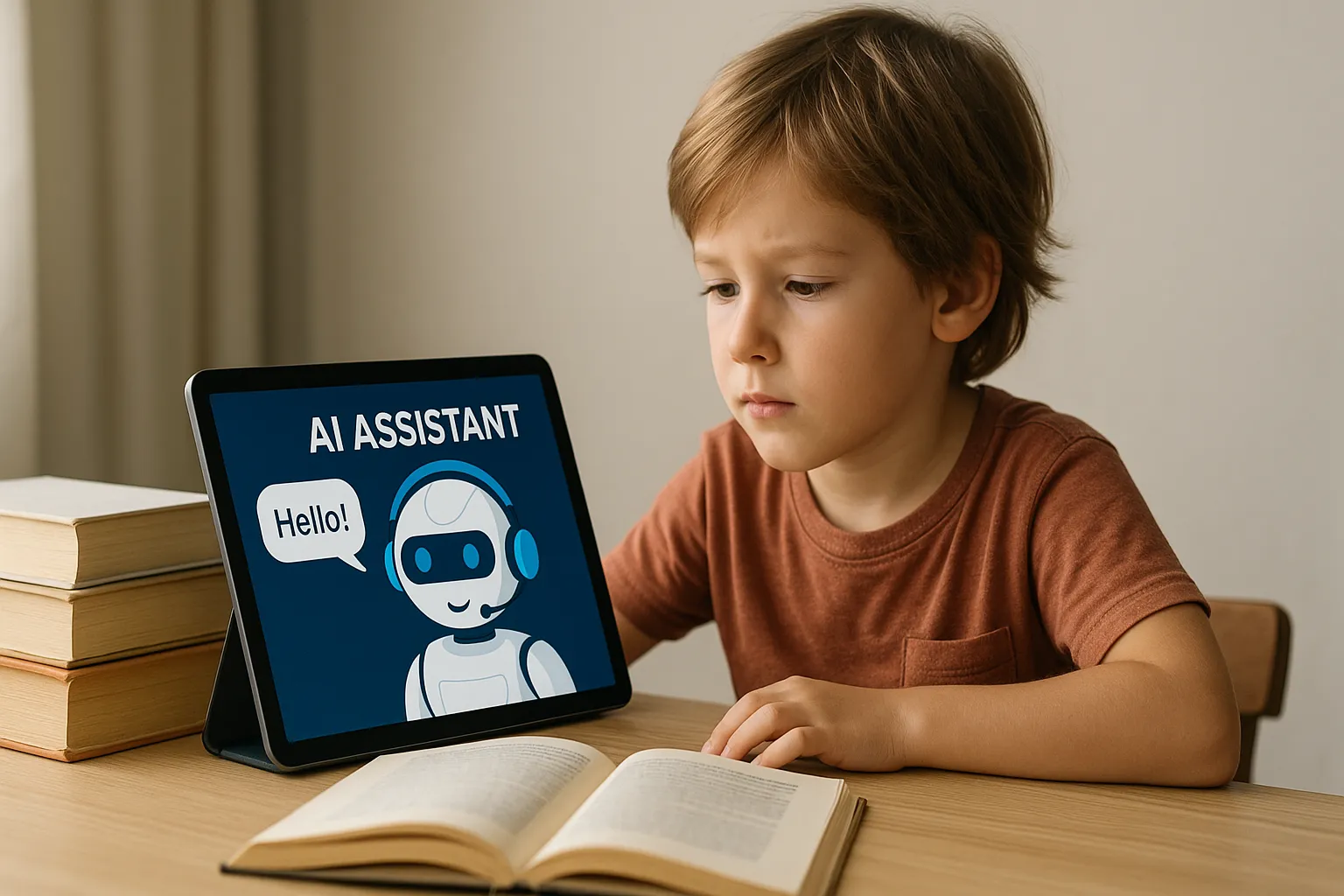Artificial Intelligence (AI) has arrived in classrooms with promises to revolutionize the way students learn. But there’s a growing question that many educators, parents, and even students are asking: Is AI in Education Making Learning Too Easy?
Let’s explore this topic in a simple, honest, and down-to-earth way.
Is AI in Education Making Learning Too Easy?
Imagine this: a student types a question into a chatbot, and in seconds, receives a full answer, explanation, and even suggested resources. Sounds amazing, right? But here’s the concern — is this helping them learn or just doing the thinking for them?
Understanding the Role of AI in Classrooms
AI tools like ChatGPT, Google Bard, or educational apps like Khanmigo are designed to support learning. They help explain topics, generate ideas, and offer instant feedback. But they can also become a shortcut — a way for students to skip the hard part: thinking deeply, making mistakes, and learning from them.
Let’s break this down with a simple example:
- Before AI: A student writes an essay by researching, outlining, drafting, and editing.
- With AI: A student asks an AI to write the essay, edits a few lines, and submits it.
Which one leads to better learning? It’s easy to see how the second option may save time, but also limit learning.
The Benefits That Can’t Be Ignored
We’re not here to bash AI — far from it! AI in education offers many advantages when used right:
- Personalized help for students who need extra support.
- Faster feedback so they can improve quicker.
- Creative tools to inspire writing, artwork, or project ideas.
- Accessibility for students with disabilities (like voice-to-text or text-to-speech).
AI can be a great assistant. But just like using a calculator in math class, it’s helpful only after you understand how to solve the problems on your own.
Are Students Becoming Too Dependent on AI?
One big concern is over-reliance. If students use AI for everything — from homework to studying — they might miss out on:
- Critical thinking
- Problem-solving
- Learning through struggle
That struggle is where the magic of learning happens.
Teachers notice it too. Some say students submit flawless essays but can’t discuss the content. Others report kids skipping reading assignments because they asked AI to summarize it.
So, is learning getting too easy? Maybe — but only if we let AI do all the work.
👉 Understand the pros and cons of AI in education for students. Learn how to balance technology with human interaction in schools.
How Can Teachers Use AI Without Making It a Crutch?
This is where educators play a key role. Here are some smart ways teachers can guide AI use in class:
1. Set Clear Boundaries
Let students know what’s okay and what’s not when using AI. For example:
- ✅ Brainstorming ideas
- ✅ Getting explanations
- ❌ Submitting AI-generated essays
2. Teach Digital Literacy
Help students understand how AI works, its limitations, and when it’s appropriate to use it. Teach them how to fact-check AI answers and spot when AI might be wrong.
3. Encourage Reflection
Ask students to explain what they learned in their own words — either by speaking or writing. This proves they’re not just copying answers but actually understanding the material.
4. Create “AI-Free” Zones
Design tasks that require personal reflection, creativity, or hands-on practice where AI can’t help. Examples:
- Journaling about a life experience
- Solving real-life math problems
- Building something physical (like a model or experiment)
5. Use AI as a Tool, Not a Teacher
Remind students that AI is like a learning buddy, not a substitute for the hard work of learning.

What About Parents? Should They Be Worried?
If you’re a parent wondering whether AI is making things too easy for your child, you’re not alone. Here’s what you can do:
- Talk to your child about how they use AI.
- Encourage effort, not just quick results.
- Celebrate mistakes — they’re part of the learning process.
- Ask teachers how they’re addressing AI use in class.
AI is Here to Stay — But So is Learning
AI isn’t going away. In fact, it’s going to become more common in education. That’s why we must learn to use it wisely, both in school and at home.
When used with purpose, AI can enhance learning, save time, and make lessons more engaging. But when misused, it can create a false sense of learning.
Key Points About Is AI in Education Making Learning Too Easy?
- AI can make learning more accessible and engaging.
- Overuse may reduce critical thinking and problem-solving.
- Teachers should set clear guidelines on AI use.
- Students need to practice explaining what they learn.
- Parents play a role in guiding healthy AI habits.
- Learning should include struggle, effort, and reflection.
- AI is a tool, not a replacement for real learning.
Conclusion
AI has changed education forever. It offers amazing tools that can make learning more dynamic and inclusive. But like any powerful tool, it must be used with care. Learning isn’t just about getting the right answers — it’s about thinking, growing, and becoming confident in your abilities.
So, is AI in education making learning too easy? It can — but only if we forget the real goal: helping students become curious, capable, and independent learners.
Have you seen AI used in your classroom or with your children? Let’s talk about it in the comments!

